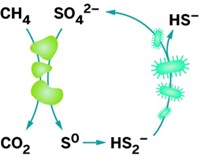Advertisement
Grab your lab coat. Let's get started
Welcome!
Welcome!
Create an account below to get 6 C&EN articles per month, receive newsletters and more - all free.
It seems this is your first time logging in online. Please enter the following information to continue.
As an ACS member you automatically get access to this site. All we need is few more details to create your reading experience.
Not you? Sign in with a different account.
Not you? Sign in with a different account.
ERROR 1
ERROR 1
ERROR 2
ERROR 2
ERROR 2
ERROR 2
ERROR 2
Password and Confirm password must match.
If you have an ACS member number, please enter it here so we can link this account to your membership. (optional)
ERROR 2
ACS values your privacy. By submitting your information, you are gaining access to C&EN and subscribing to our weekly newsletter. We use the information you provide to make your reading experience better, and we will never sell your data to third party members.
Environment
Hotly Fixated On Nitrogen
Newly discovered microbe reduces N2 to NH3 at record-high temperatures
by Sarah Everts
December 18, 2006
| A version of this story appeared in
Volume 84, Issue 51

A microbe with a penchant for reducing dinitrogen in steamy hydrothermal vents has set a new high-temperature record for this enzymatic activity (Science 2006, 314, 1783).
Although N2 accounts for 70% of the dissolved gas in seawater, most microbes cannot use N2 itself as a nitrogen source. Instead they require that N2 be converted into useful building blocks such as NH3 in a process called nitrogen fixation. But researchers had observed this conversion only in shallow waters by photosynthetic bacteria.
"Nitrogen fixation in hydrothermal vents had been speculated, but nobody had actually isolated a microorganism that could do it," says lead author Mausmi P. Mehta, who recently received her doctorate from the University of Washington, Seattle.
The archaeon that Mehta and John A. Baross discovered is called FS406-22, and "what makes it very interesting is that it can reduce dinitrogen at such high temperatures," comments Anna-Louise Reysenbach, a microbial ecologist at Portland State University. FS406-22 can convert N2 to NH3 at 92 °C, "smashing" previous temperature records by "a comfortable 28 °C margin," writes Douglas G. Capone, an oceanographer at the University of Southern California, in an associated perspective.
A remote-controlled robot called ROPOS sucked up FS406-22 at 1,500 meters below sea level, in a hydrothermal-vent-rich area of the Juan de Fuca Ridge in the northeast Pacific Ocean. At the surface, the microbe was so hard to grow that Mehta had to try 600 times before finding the right recipe.
To reduce dinitrogen, FS406-22 uses a nitrogenase enzyme that has a sulfur-rich metal cluster in its active site. The team is now trying to figure out whether the enzyme contains molybdenum or tungsten, metals commonly found in heat-hardy enzymes, Baross says.
FS406-22's nitrogenase is so ancient it may have evolved before the separation of bacteria, archaea, and higher organisms, Baross says. "I'm really excited about the evolutionary aspects," he adds. "FS406-22 may give us a handle on how metal sulfur enzymes evolved."
The protein's sequence could offer some engineering insight to researchers who might want to use heat-loving enzymes in industrial settings. Next, the researchers plan to sequence the bug to see if it has any more interesting enzymes in its genetic portfolio.



Join the conversation
Contact the reporter
Submit a Letter to the Editor for publication
Engage with us on Twitter